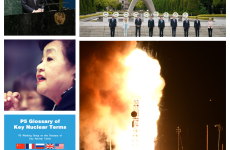“History is a nightmare from which I am trying to awake.”
James Joyce, The Portrait of The Artist as a Young Man
On June 25, in the dazed wake of the aborted rebellion by a mercenary army, the Wagner Group, against Russia’s military and political leadership, the BBC’s Moscow correspondent, Steve Rosenberg, interviewed residents of a city braced for turmoil, even bloodshed, just the day before. In general, the mood seemed muted, a wary relief suiting the precariousness of the moment—and the surrealism of a drama pitting President Vladimir Putin against a monster of his own making, Wagner’s gangster-boss Yevgeny Prigozhin, maddened by the carnage of his own men (hired guns and convicts) in Putin’s illegal war against Ukraine. But as Rosenberg suggested, the sense of numb misgiving may also have reflected the psychic chill of life under dictatorship: “many people told me [off-camera],” he reported, “that they felt powerless, unable to make a difference.”
For while it is a rule with important exceptions—many Russians privately, and some still publicly, oppose autocracy and abhor the war; and hundreds of thousands have left the country rather than fight in Ukraine—it is generally true that all powerlessness corrupts the social soul, sapping citizens of moral agency, creative vitality and political imagination. In his novel The Man Without Qualities—set on the suffocating, surreal eve of World War One in the Austro-Hungarian Empire—Robert Musil summed up much of modern history in four words: “Pseudorealities lead to war.” Such whirlwinds, he argued, grimly reaped on the battlefield (or in bombed towns and cities), are sown in the everyday, routinized wastelands between the powerful few and powerless many, vacuums filled by unreal relations and experiences, nightmares with violently real—first metaphorically, then literally explosive—effects.
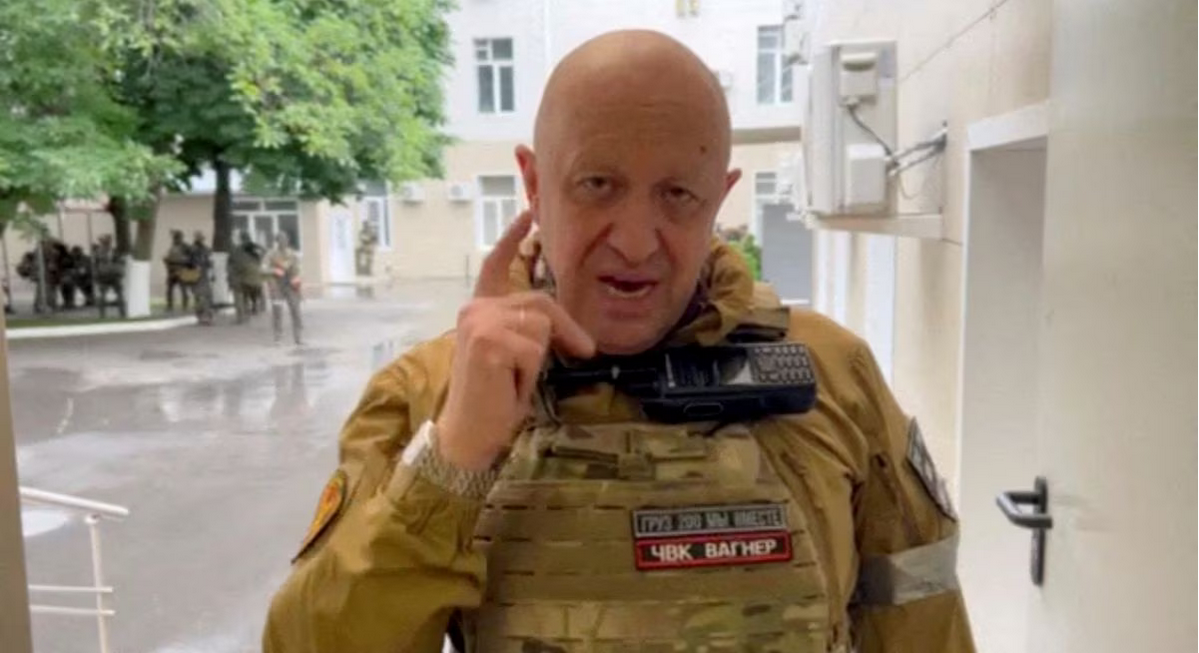
Wagner mercenary group leader Yevgeny Prigozhin speaks inside the headquarters of the Russian southern army military command centre in the city of Rostov-on-Don, Russia, in this still image taken from a video released June 24, 2023
Conversely, citizen empowerment can act as a powerful agent and catalyst of real, peaceful change, and in recent editions I have considered the social, political, and ecological awakening of the Tigray region of Ethiopia, and the inspiring experiment in ‘social ecology’ and autonomous self-governance in the Rojava (western Kurdistan) region of north and east Syria.
The Tigray renaissance (1991-2020) followed years of authoritarian control, exercised from a distant power center, over all aspects of life; it was brutally interrupted by a genocidal assault (with ethnic cleansing still ongoing) launched by that same self-aggrandizing ‘authority.’ The Rojava revolution began a decade ago when the vice-grip of the Syrian dictatorship was broken by civil war; Rojava’s struggle to replace a nightmarish nation-state with a network of cooperative communal assemblies bravely continues, amid and despite that war.
Both cases illustrate not just the desire but the capacity of ‘ordinary people’ to build cultures of positive peace, to live for real in healthily free, naturally human societies. For a prime example of the opposite phenomenon—a ‘pseudopeace’ dominated by a dehumanizing culture of violence—we can turn to the Korean peninsula.
* * *
July 27 marks the 70th anniversary of the Armistice ending the Korean War (1950-53), one of the bloodiest conflicts in history, killing at least four million people—the majority of them non-combatants—and deliberately devastating vast swathes of territory. As is customary with such agreements, the Armistice was built not to last, but rather create the conditions for peace proper to emerge. “In order,” Article IV reads, “to ensure the peaceful settlement of the Korean question, the military Commanders of both sides hereby recommend to the governments of the countries concerned on both sides that”:
…within three months after the Armistice Agreement is signed and becomes effective, a political conference of a higher level of both sides be held by representatives appointed respectively to settle through negotiation the questions of the withdrawal of all foreign forces from Korea, the peaceful settlement of the Korean question, etc.
There are many reasons why this anticipated 90-day path to a peace conference will, on the anniversary, have stretched to 25,567 days with no breakthrough. Fundamentally, though, I believe the key to the failure lies in the freeze placed on the process by “both sides” cited in Article IV. For the narrow, immediate purposes of a ceasefire, the only sides that mattered were the warring factions: the North Korean and Chinese forces, and a US-led UN force of 18 nations. The text did not, however, thereby imply that no other ‘sides’ should count in the infinitely broader, slower project of building peace; but because no such building began, the people’s side—civil society—has been largely sidelined, its realities and voices and talents ignored.

With her brother on her back a war weary Korean girl tiredly trudges by a stalled M-26 tank, at Haengju, Korea. 9 June 1951. Maj. R.V. Spencer, UAF. (Navy), via Wikimedia Commons
In addition to the geographic North-South split, then, there is another fateful divide in post-1953 Korea: between the ‘two sides’ of state and society. For although North Koreans obviously find themselves in an incomparably more impoverished, vulnerable and powerless daily plight than their compatriots in the South, when it comes to efforts to convert the ceasefire to peace—or to halt the drift to an unimaginably horrific, nuclear resumption of hostilities—the vast majority on both sides of the Demilitarized Zone (DMZ) are equally shut out, deprived of input and influence, stuck between the lines and gears of power.
As Jennifer Dilbert of the American Friends Service Committee recently reflected, the “human costs” of the officially ongoing “war is rising with each decade that passes—families do not have the opportunity to reunite, servicemembers from the war are still missing,” and efforts to establish the “dialogue and people-to-people exchange necessary” to “reimagine relationships and forge a new path forward based on mutual thriving and human security” face insurmountable odds; as, often, do efforts to provide humanitarian relief to North Korea, even in times of acute distress (e.g. famine and flood).
Ironically, the stage was set for the absurd dramas of the Armistice era before the 90 days specified in Article IV had expired. On 1 October 1953, a ‘Mutual Defense Treaty’ was signed between the US and South Korea, under which Seoul ceded to Washington “the right to dispose United States land, air and sea forces in and about” its territory. The Treaty triggered massive militarization on both sides of the DMZ, featuring from 1958-1991 the deployment of hundreds of US atomic weapons, making a thermonuclear mockery of the Armistice’s ironclad commitment, in Article II(d), to “cease the introduction into Korea of reinforcing combat aircraft, armored vehicles, weapons, and ammunition.”
American nuclearization of the South set in motion the North’s long journey to the Bomb. It also revealed the peninsula as a local pawn in a global game, with Washington’s warheads pointed not just at Pyongyang but Moscow and Beijing, integrated into the Pentagon’s elaborately delusional plans to wage and win World War Three.

UN delegate Lieut. Gen. William K. Harrison, Jr. (seated left), and Korean People’s Army and Chinese People’s Volunteers delegate Gen. Nam Il (seated right) signing the Korean War armistice agreement at P’anmunjŏm, Korea, July 27, 1953. Photo U.S. Department of Defense (F. Kazukaitis. U.S. Navy), Public domain, via Wikimedia Commons.
As was the case in Europe, the post-Cold War 1990s should have given peace on the peninsula a real chance; and as in Europe, the chance was squandered through a macho mix of American hubris (‘to the victor belongs the spoils’), and an addiction to militarism—the narcotic nonsense of ‘peace through strength’—laced with fear (especially strong in Pyongyang) of the political consequences, the potential power shifts, of deep disarmament. Though American nuclear weapons were withdrawn from the peninsula by President George H.W. Bush, South Korea remained under the American nuclear ‘umbrella,’ an essentially unchanged, hostile posture maintained by President Bill Clinton, accelerating the North’s drive to proliferate and, well, Clouding a period of hesitant, embryonic détente between Clinton and North Korean leader Kim Jong-il.
In 2002, all those partial gains—including the 1994 Agreed Framework offering Pyongyang nuclear reactors for peaceful purposes; a 1999 moratorium on long-range missile tests by North Korea (in return for an easing of US sanctions); a first-ever North-South leaders’ summit in Pyongyang in June 2000; and an October 2000 visit to Pyongyang by US Secretary of State Madeleine Albright—were lost when, in a bloodcurdling post-9/11 State of the Union address, President George W. Bush inserted North Korea, alongside Iran and Iraq, into an “axis of evil” one could and should not try to make peace with.
In January 2003, with an illegal American invasion of Iraq looming, North Korea withdrew from the Non-Proliferation Treaty (NPT) and in 2006 ‘crossed the threshold,’ becoming the world’s ninth nuclear-weapon state with the first of its six (so far) underground tests. In the same 2009 speech in which he famously committed himself “to seek the peace and security of a world without nuclear weapons,” Bush’s successor, Barack Obama, said of North Korea only that it “must know that the path to security and respect will never come through threats and illegal weapons.” Obama, indeed, somnolently opted to leave the US’s own threatening posture (starring those same weapons) unchanged while pursuing a policy of ‘strategic patience’—striking many observers as far more patient than strategic—before advising incoming President Donald Trump to treat the North Korean nuclear threat as his “most urgent problem.”

North Korean leader Kim Jong-il and U.S. Secretary of State Madeleine Albright in Pyongyang, 23 October 2000. (Photo by David Guttenfelder, AP)
Trump, in his typically incoherent and self-sabotaging way, took a dramatic new tack, twice meeting North Korean leader Kim Jong-un—the “little rocket man” on whose head (and 25 million others) he had previously threatened to rain “fire and fury.” Before the second summit, in Hanoi in 2019, informed speculation predicted a seismic diplomatic shift: a joint ‘end of enmity’ declaration that the war was over, coupled with partial (but significant) denuclearization by North Korea, an end to nuclear war exercises by the US and South Korea, and partial (but significant) relief of ‘maximum pressure’ sanctions. In the tragic event, Trump’s latest National Security Advisor, John Bolton—an anti-arms control, anti-détente superhawk from the George W. Bush Administration—successfully insisted on a stark unilateral ultimatum, angrily rejected: complete denuclearization, on US terms and timetable, before any sanctions relief or move to replace the Armistice.
One mortified observer at Hanoi was Christine Ahn, founder of the Women Cross DMZ peace group, who told Newsweek that when she saw Bolton leading the US delegation, “it just seemed for us, ‘O, my gosh, something fishy is going on here.’” Sure enough, and yet again: peace was off the table, and war was on the cards.
* * *
Canada sent 26,000 troops into Korean battle; 516 were killed, and to remember them Veterans Affairs Canada has issued a 70th anniversary postcard featuring a painting by Ted Zuber, Freeze, eerily depicting a night patrol illuminated by enemy flare. Unfortunately, this sombre act of war remembrance is then framed by a false ‘big picture’: the Korean War as just and noble.
The postcard is specifically aimed at schools, encouraging pupils to send messages of praise and gratitude to veterans “who served in the cause of peace and freedom.” Teachers are cautioned to “collect the postcards and ensure that they contain appropriate messaging,” sticking to the ‘just war’ script and avoiding any suggestion the slaughter was ruthlessly and criminally prosecuted (on both sides), motivated by ideological hatred (on both sides), in sum a tragedy that, in the words of Women Cross DMZ, “remains the defining trauma of the Korean people, both on the peninsula and in the diaspora.”
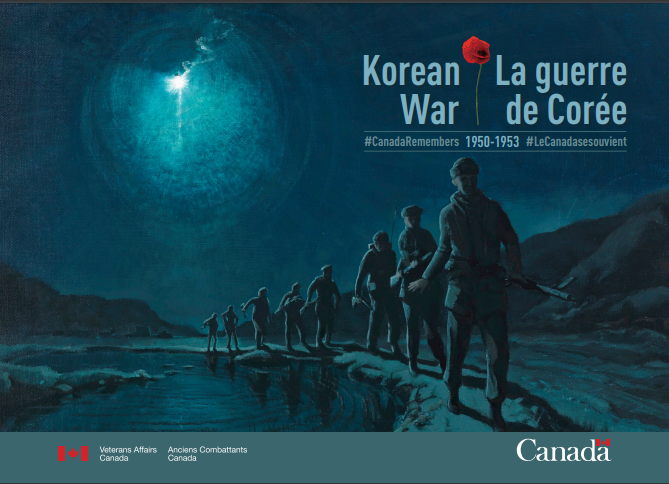
The truly noble cause for which Women Cross DMZ is non-violently fighting—together with the other members of the recently formed US Korean Peace Alliance—is a people’s peace, transformatively empowering, built by and for civil society. As feminist scholar and peace activist Gloria Steinem wrote in June:
In 2015 when I joined Christine Ahn and a group of women crossing the DMZ, I was inspired by the opportunity to put our bodies where our hopes are: the reunification of families and a nation still divided by the Korean war of more than seventy years ago. We felt that it was important to do with our physical selves what we hope could be done politically. Engagement and dialogue are way more likely to achieve the kinds of goals we want than isolation and silence.
The Korean Peace Alliance is hard at work promoting legislation in the House of Representatives, the Peace on the Korean Peninsula Act, introduced on March 3 and calling on the US Secretary of State to “pursue serious, urgent diplomatic engagement with North Korea and South Korea in pursuit of a binding peace agreement constituting a formal and final end to the state of war.” The work included visits to 82 Congressional offices during a recent (June 5-9) Korea Peace Advocacy Week; yet as of July 5, only 33 of 435 members of the House have co-sponsored H.R. 1369, and it is a sad sign of our militarized times that Women Cross DMZ are excited to be “well on our way to surpass” the 46 co-sponsors of a comparable text in the previous Congress.
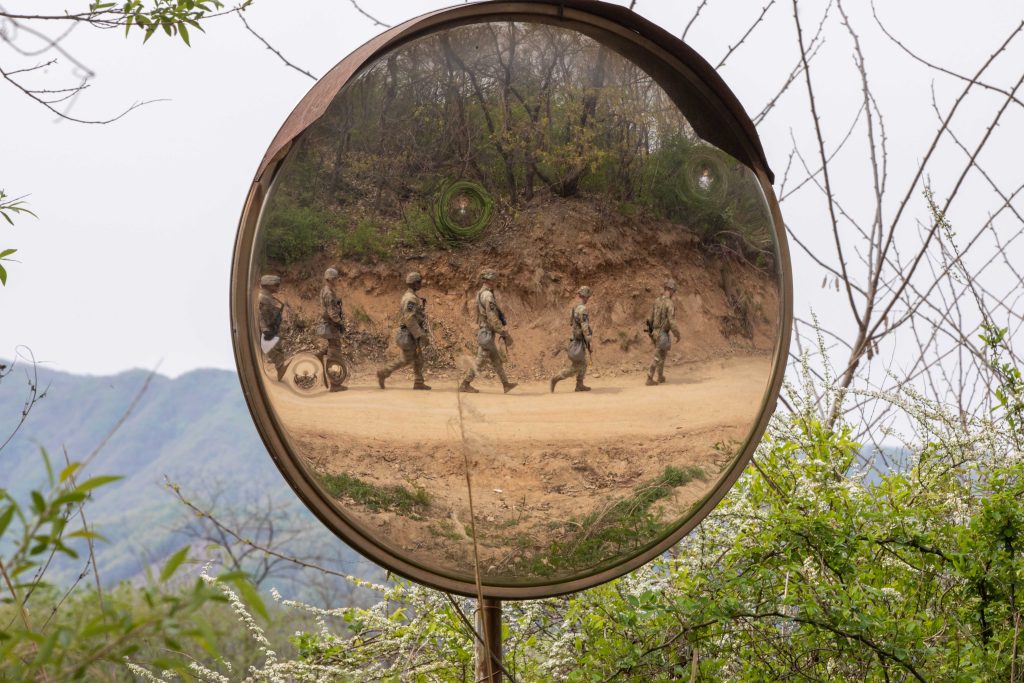
Soldiers participate in the expert physical fitness assessment and day and night land navigation during a competition in South Korea at Camp Casey and Rodriguez Live Fire Complex, 24 April, 2023. (Photo by LaTrice Langston, American Battle Monuments Commission)
Frighteningly, such paltry levels of support suggest a profound misreading of the state of ‘play’ on the peninsula, where the new South Korean President, Yoon Suk Yeol, has abandoned all attempts of his predecessor, Moon Jae-in, to defuse tensions and foster North-South détente (a peace push derailed by the diplomatic trainwreck in Hanoi). On April 23 this year, marking another 70th anniversary—the establishment of the US-South Korea Alliance preceding the Mutual Defense Treaty—Presidents Yoon and Joe Biden issued a weirdly celebratory, blandly bellicose Declaration greatly increasing “cooperative decision making on nuclear deterrence” and establishing a bilateral Nuclear Consultative Group (NCG) to regularly “discuss nuclear and strategic planning.”
Other sinister developments include, as lamented by Women Cross DMZ, “the US and South Korea holding the largest ever live-fire drills and a US nuclear-powered submarine arriving in South Korean waters a day after North Korea resumed missile tests.” In fact, the Biden-Yoon Declaration means that not just nuclear-powered but nuclear-armed US submarines have returned to South Korean waters for the first time since 1991. Meanwhile, in September 2022, North Korea adopted a new Nuclear Law ‘allowing’ Kim Jong-un to launch a nuclear attack “if war deterrence fails”—with a strike to be “launched automatically and immediately” in the event the Dear Leader is neutralized by an American first strike.
Some military observers can see exactly where such escalatory steps are likely to lead. Speaking in support of H.R. 1369, retired 3-Star Lieutenant-General Dan Leaf stated:
As a two-war combat veteran who served four years in the Republic of Korea and as former Deputy Commander and Acting Commander of US Pacific Command, I believe Congress must act now to push for the end of America’s longest war, reduce the risk of a nuclear catastrophe, and set the conditions through peace for addressing denuclearization and human rights.
Or, as he has also observed:
No matter how challenging the negotiations and politics of securing peace on the Korean Peninsula may prove, they are nothing compared with nuclear war.
One of the main contentions of Women Cross DMZ and its allies is that structurally integrating civil society into ‘the negotiations and politics of securing peace’ will significantly help, not unrealistically hinder, the process. And one crucial means of maximizing the effectiveness of such engagement is to centralize the role of women’s organizations, for as impressive recent research from the Council on Foreign Relations shows:
…women’s participation in conflict prevention and resolution can improve outcomes before, during, and after conflict. For example, women’s participation increases the probability of a peace agreement lasting at least two years by 20 percent and a peace agreement lasting 15 years by 35 percent.
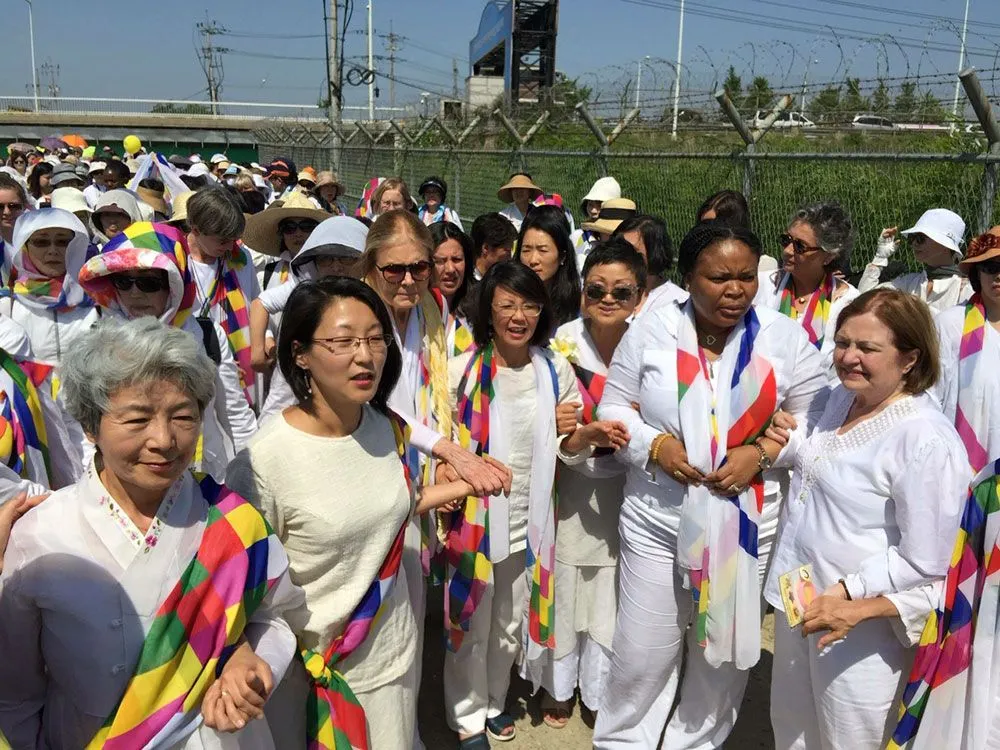
Gloria Steinem, Christine Ahn, Leymah Gbowee, and Mairead Maguire were among the 30 women peacemakers who crossed the DMZ in 2015. (Source: Women Cross DMZ)
The argument is not essentialist (that women are inherently more peaceful than men). On the contrary, as a Korea Peace Now fact sheet stresses:
…it’s not because of gender that many women are powerful peacemakers; it’s because they are advocates of feminist peace. Feminist peacebuilders believe that dialogue and cooperation, not weapons and sanctions, are the most effective routes toward creating genuine, long-lasting peace and security for all people.
Again, many women are not feminists, and many people of other genders are; but in terms of the documented differences being made in many conflict zones, women-led feminist initiatives are of proven worth. As an October 2022 report by Women Cross DMZ—US-China Competition and the Korean Peninsula: From Confrontation to Peacebuilding—notes, despite the fierce headwinds of the new, triangular Cold War, women’s groups are leading the current “unwavering effort by civil society to bring the Korean conflict to an end by building relationships across the DMZ and throughout the broader region;” and as long as they are, “there is still hope for genuine peace that can reverse the growing militarization of East Asia.” In the course (no doubt faltering) of that great reversal, an epochal redirection of resources—and a general rehumanization of politics—may also occur, a ‘peace pivot,’ as Women Cross DMZ beseeched last month, “from endless wars”—and pseudopeaces—“toward more basic human needs…including housing, healthcare, food security, and climate action.”
To give such peace a chance, people need the chance to build it.
Sean Howard is adjunct professor of political science at Cape Breton University and member of Peace Quest Cape Breton and the Canadian Pugwash Group. He may be reached here.


